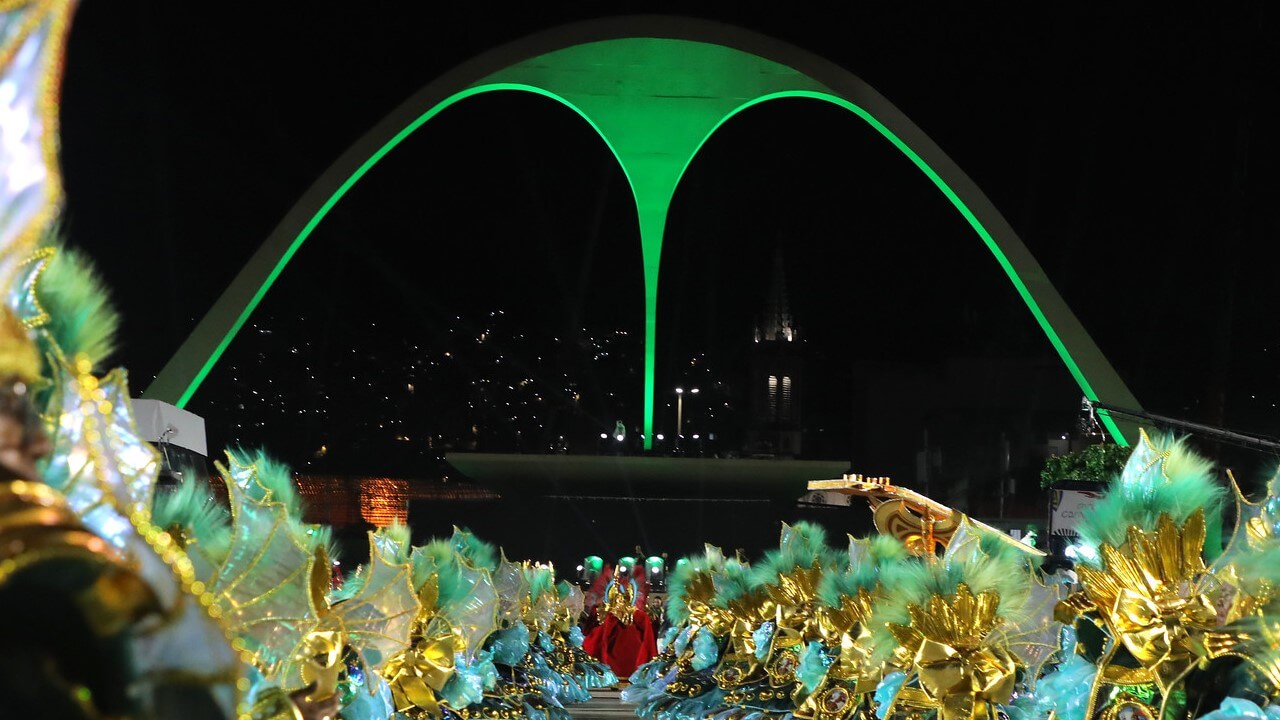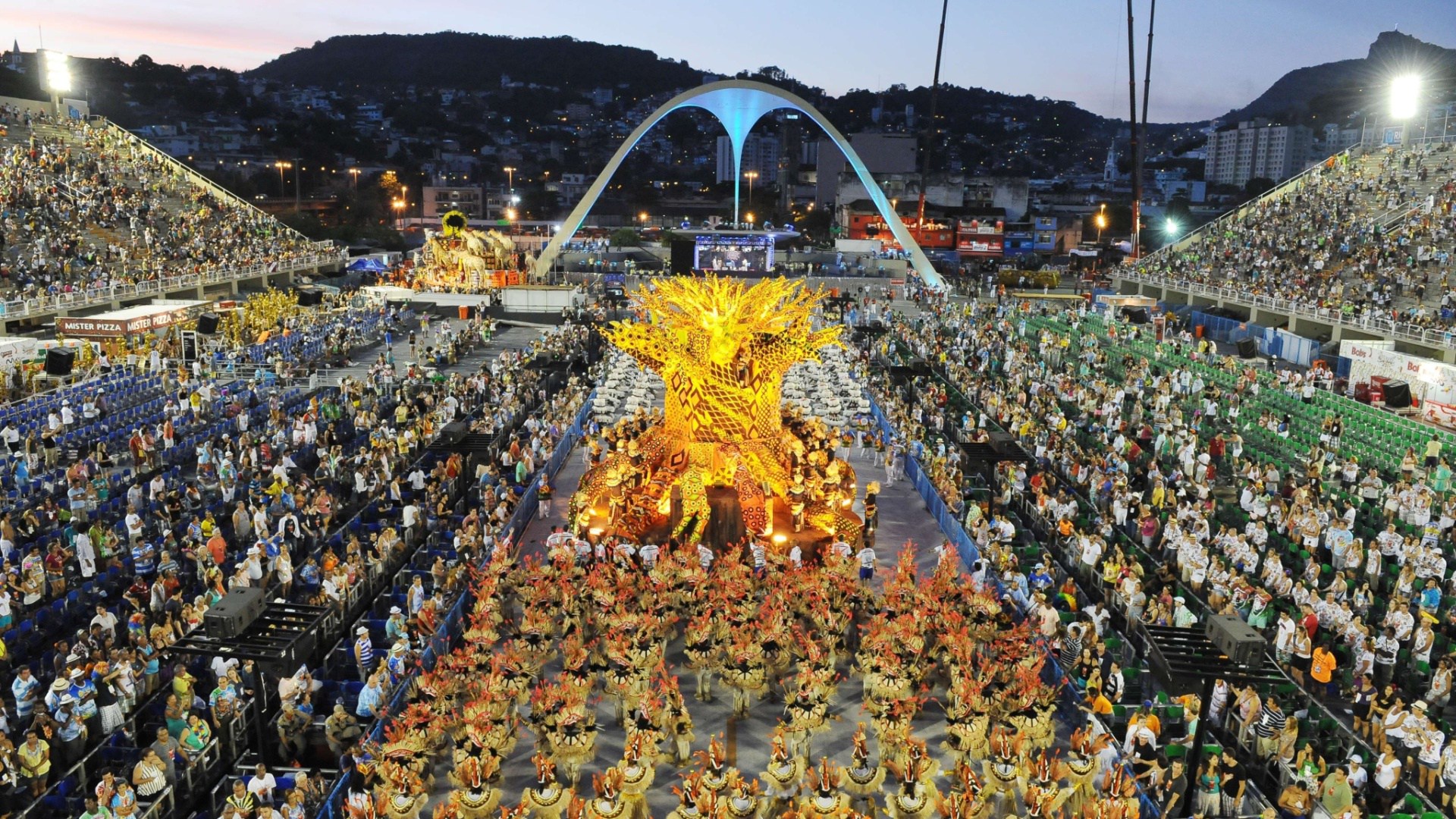- Your cart is empty
- Continue Shopping

Curiosities about the Sambadrome in Rio de Janeiro
Rio de Janeiro's Sambadrome is more than just a venue for carnival parades; It is a cultural icon that represents the rich tradition and passion of the Brazilian people for celebration. Built to host samba school parades during Carnival, the Sambadrome has become one of the most emblematic places in the wonderful city. Let's explore some fascinating facts about this incredible festive space.

1 – Architectural Inspiration
The Sambadrome was designed by renowned Brazilian architect Oscar Niemeyer. Opened in 1984, the project reflects Niemeyer's genius and his ability to capture the essence of Brazilian culture in architectural forms. The grandeur and functionality of the Sambadrome make it a unique masterpiece on the world stage.
2 – Samba Walkway
The Sambadrome is known as the “Samba Passarela”, and its track is a spectacle in itself. 700 meters long, the catwalk is where Rio de Janeiro's samba schools parade to impress the judges and delight the public. The runway is strategically designed to accommodate thousands of spectators and provide a privileged view of the parade.
3 – Sectors and Boxes
The Sambadrome is divided into numbered sectors, each with its own unique atmosphere. The boxes along the avenue are frequented by celebrities, politicians and influential figures, while the stands offer a more accessible experience for carnival enthusiasts. The diversity of audiences contributes to the vibrant and inclusive atmosphere of the event.
4 – History of Samba Schools
Samba schools play a central role in the Sambadrome parades. Each school has its own unique history, colors, symbols and plots. Competition between schools is fierce, and parades are meticulously planned throughout the year. The groups compete in several categories, including samba, costumes, allegories and drums.
5 – Notorious Battery
The drums of a samba school are a crucial part of the parade, providing the engaging rhythm that gets everyone present into the carnival spirit. The drumline is made up of talented musicians, and the drum master is a respected and charismatic figure, often recognized as one of the school's spiritual leaders.
6 – Carnival as a Cultural Industry
Rio de Janeiro Carnival is not just a party; is a significant cultural industry. Thousands of people are involved in the production of the parades, from the artists who create the costumes to the musicians who compose the sambas. The event attracts tourists from all over the world, generating revenue and promoting Brazil as a cultural destination.
7 – Evolution and Modernization
Over the years, the Sambadrome has undergone several renovations and updates to ensure its safety and functionality. The modernization included the installation of cutting-edge technology, efficient lighting and infrastructure improvements to accommodate the growing number of visitors.
8 – Carnival beyond the Sambadrome
Although the Sambódromo is the epicenter of the parades, Rio de Janeiro Carnival goes beyond that, with street blocks, parties and events taking place throughout the city. This expansion reflects the diversity of the celebration, providing unique experiences for different audiences.
Rio de Janeiro's Sambadrome is more than a parade venue; It is the beating heart of Carnival, where culture, tradition and joy meet. Each year, the Sambódromo continues to attract people from all over the world, cementing its place as one of Brazil's most vibrant and exciting cultural icons.

